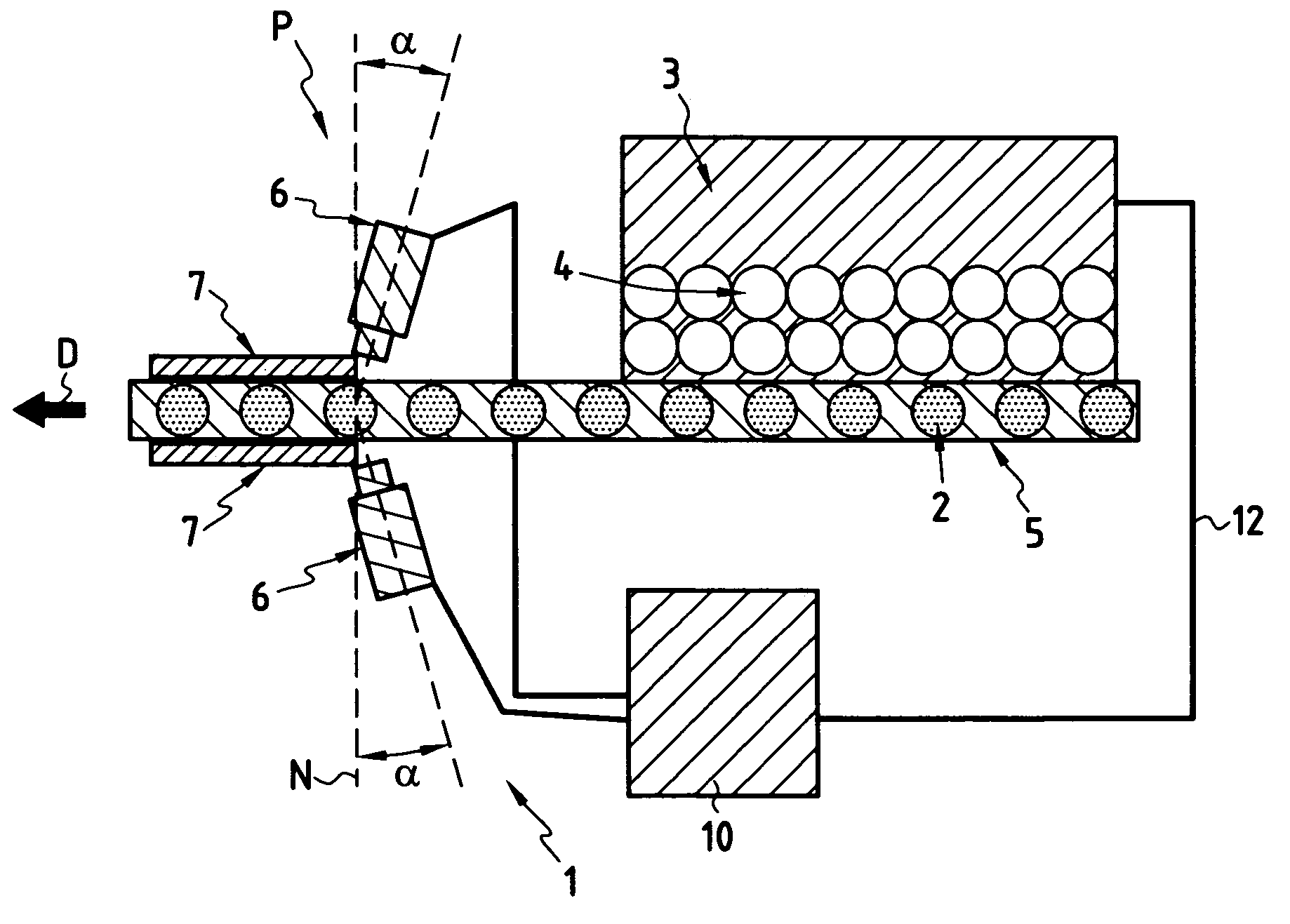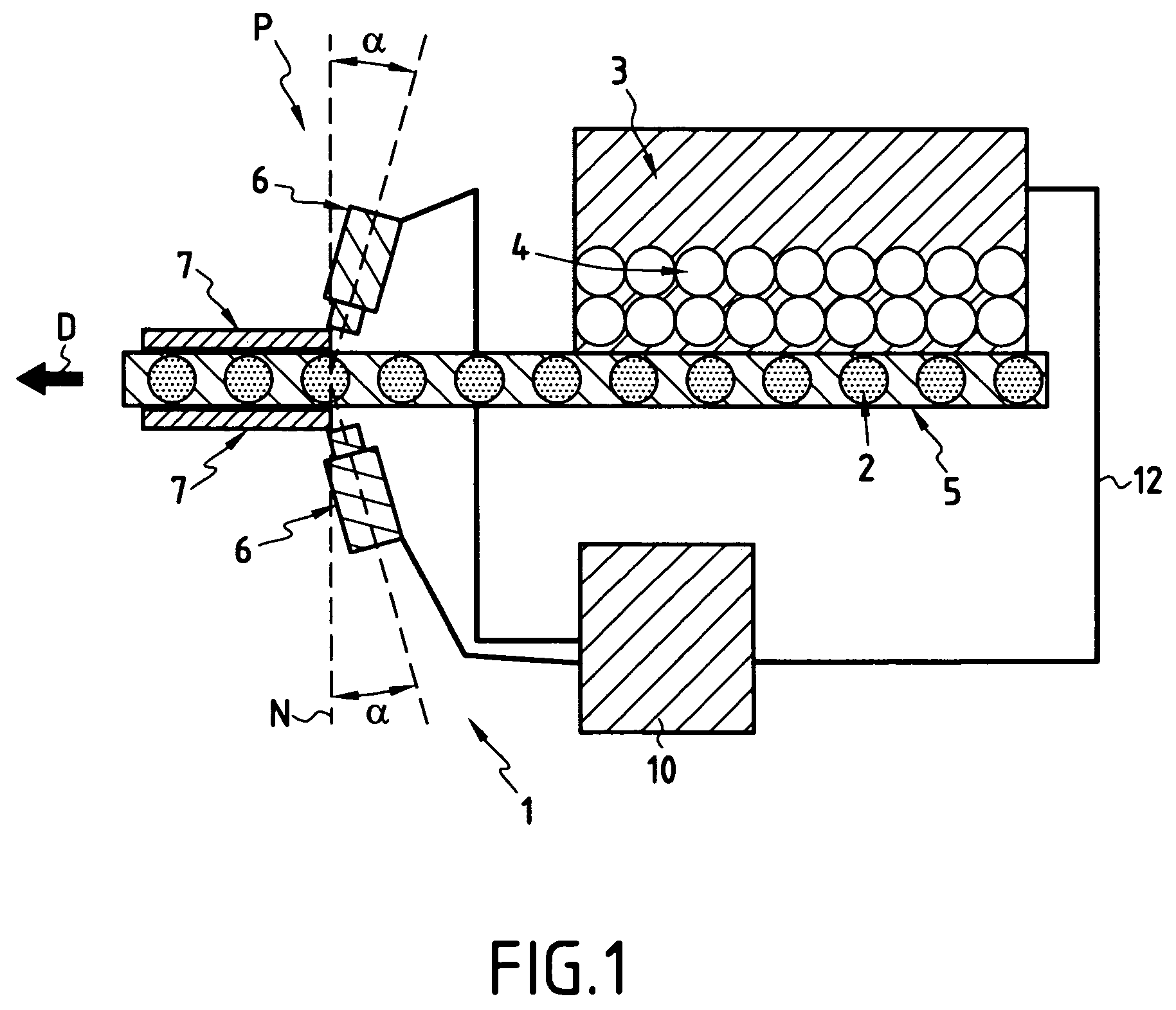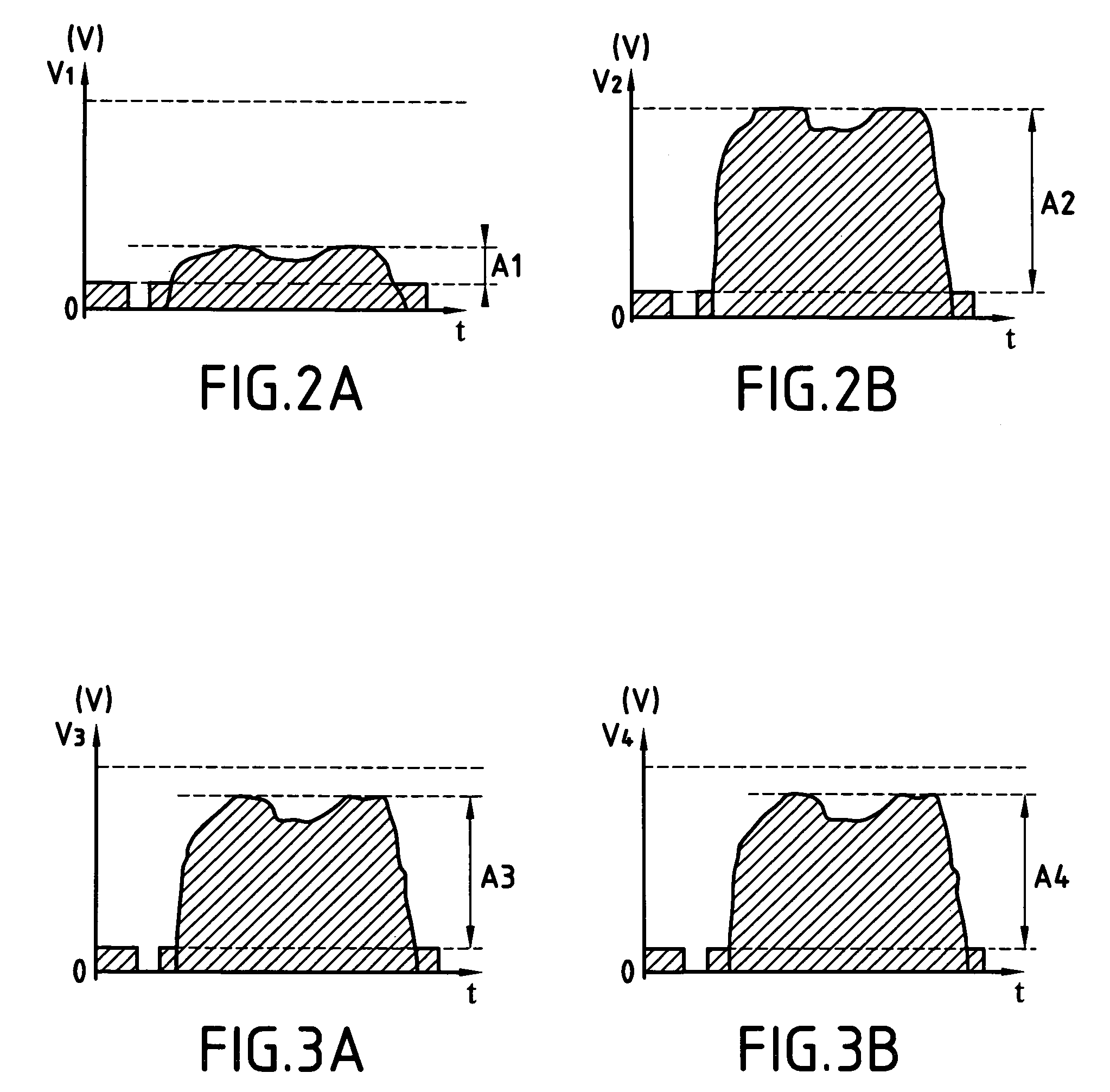Method and apparatus for inspecting hot hollow articles that are translucent or transparent
a hollow article and transparent technology, applied in the field of fabrication glass objects, can solve the problems of affecting the quality of detection, the apparatus does not give satisfaction in practice, and the article is considered defectiv
- Summary
- Abstract
- Description
- Claims
- Application Information
AI Technical Summary
Benefits of technology
Problems solved by technology
Method used
Image
Examples
Embodiment Construction
[0040]As can be seen more clearly in FIG. 1, the invention relates to an installation 1 enabling hollow, transparent or translucent articles 2 such as glass flasks or bottles, for example, to be inspected while hot. The installation 1 is placed in such a manner as to enable the articles 2 leaving a fabrication or forming machine 3 and thus presenting high temperature to be inspected.
[0041]In conventional manner, the forming machine 3 comprises a series of cavities 4 each serving to form a respective article 2. In conventional manner, the articles 2 that have just been formed by the machine 3 are taken by an output conveyor 5 so that the articles 2 constitute a line on the conveyor 5. The articles 2 are thus taken successively to various treatment stations.
[0042]In accordance with the invention, the installation 1 comprises a quality control or inspection station P that operates at a high rate of throughput and that inspects the articles 2 while they present high temperature. To this...
PUM
| Property | Measurement | Unit |
|---|---|---|
| angle of inclination | aaaaa | aaaaa |
| angle of inclination | aaaaa | aaaaa |
| transparent | aaaaa | aaaaa |
Abstract
Description
Claims
Application Information
 Login to View More
Login to View More - R&D
- Intellectual Property
- Life Sciences
- Materials
- Tech Scout
- Unparalleled Data Quality
- Higher Quality Content
- 60% Fewer Hallucinations
Browse by: Latest US Patents, China's latest patents, Technical Efficacy Thesaurus, Application Domain, Technology Topic, Popular Technical Reports.
© 2025 PatSnap. All rights reserved.Legal|Privacy policy|Modern Slavery Act Transparency Statement|Sitemap|About US| Contact US: help@patsnap.com



